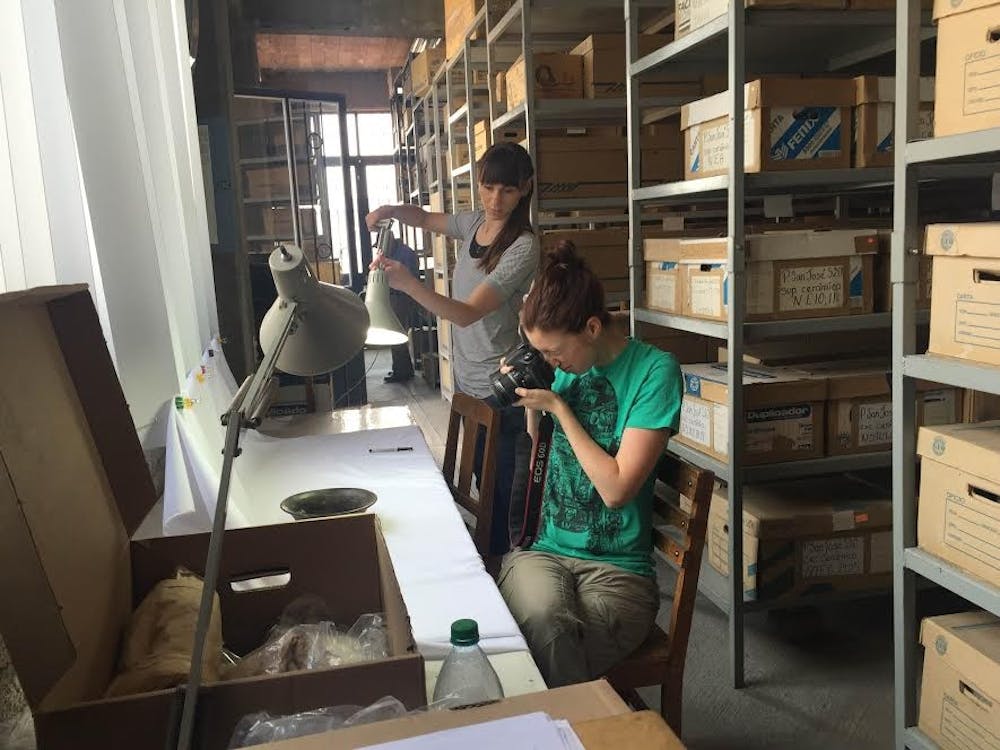A group of ASU researchers is shining new light on the political history of one of the most popular tourist sites in North America.
It comes down to the contents of recently-excavated pyramids in Teotihuacan, Mexico, and how what was found — or more accurately, what wasn't found — reveals the political structure of the pyramids' first inhabitants.
"They found fancy stuff and people," Michael Smith, a professor of anthropology at ASU who led the University's research there, said. "But no royal burial."
Rather than finding a burial site for kings, they found offerings of animals, such as dogs and eagles, and even young soldiers.
"What they found was a bunch of burials of young, adult males with their hands crossed behind their back," Smith said. "I think that these were sacrificed warriors".
Smith said this lack of evidence means that Teotihuacan, which was the largest city in the Americas at its peak in the first half of the first millennium A.D., may not have been ruled by kings and autocrats.
"One thing that we learned in anthropology and archeology recently," Smith said. "Is that there are more of these Greek style governments in the ancient world than anyone previously thought".
Smith said that types of government can be represented on a spectrum. One side is autocracy, a form of government led by a ruler with absolute power, and on the other is a collective government, which more closely resembles ancient Athenian-style democracy.
"Where would Teotihuacan fit in?" Smith said. “Well, it would be more toward the collective end".
Archeologists began taking an interest in the city in the 1950s and created the Teotihuacan Mapping Project, which Smith joined in the 1970's when he was an undergrad.
ASU is the only foreign entity with a lab and dig facility on site, he said.
"It's great that these events happen and that the knowledge gets spread not just to ... specialists," Maria Nieves Colon, a graduate student studying anthropological genetics at ASU, said. "But to the general public."
Over 24,000 boxes of collected artifacts sit at the ASU lab in Mexico. However, the artifacts technically belong to the Mexican government, so students serve as stewards when they go to the field.
Although the findings cannot be easily sent back to Tempe, the discovery is already making waves in the anthropological community at the University.
Smith said more Sun Devils and lovers of anthropology can get involved with the Teotihuacan project by donating to fund students' trips to Mexico, where the team hopes to uncover more about life in Teotihuacan.
"It's really an amazing part of this program," said Juliana Novic, an ASU anthropology graduate student. "That dialogue (that) is ongoing is part of the idea of the academic environment that we have here. You get to experience a lot of these things as they're happening."
Reach the reporter at jhaynie1@asu.edu or follow @jilli_haynie on Twitter.
Like The State Press on Facebook and follow @statepress on Twitter.




